Ficha 4 × 1
Date: 06/08/2012 the 08/08/2012
Saímos of: Merida - Venezuela
Stop em: Ciudad Ojeda, Venezuela
Final destiny: Santa Marta - Colômbia
Total distance: Just over 750 km (in 2 days)
Path: Mérida follow toward Ciudad Ojeda undergoing Valera and Agua Viva. We passed Maracaibo, San Rafael of the Mojan, Já Paraguachón na Colômbia, until arriving in Santa Marta.
Where to sleep: Ciudad Ojeda (tents inside a motel), Santa Marta (Hostel La Brisa Loca on first night and rented tents at Cape San Juan, within the Tayrona park).
What we eat good: Fried potato dumplings, stuffed with ground beef. Good for money.
Filled Tire : The soccer field at Cape San Juan, within the Tayrona park, which allowed us to have our second soccer game, integrating people from different countries with the same passion.
Tire murcho: The price charged to tourists from other countries come in Tayrona National Park, almost three times more expensive than the Colombians charged for.
Venezuela Border – Colômbia and Santa Marta
We left Merida one afternoon in order to cross the border with Colombia the next day. We spent the night in Ciudad Ojeda, a roadside motel after we tried to stay for free in the parking lot of a hospital and a club, unsuccessfully. Agreed the following Manhã, to 7:00 Morning and 30 minutes we were all ready, inside the car, towards our second border. Halfway, we passed 2 situations that are worth reporting. The first occurred in the city of Maracaibo, second largest city in Venezuela, well known for their business meetings related to the vast oil region. At our stop for breakfast, We were met by Brenda, a friendly lady who served us a bread stuffed with cheese and an apple juice. She reminded us of a practice we are doing along the journey: ask a local person, that somehow has collaborated or at least spent a pleasant time with the expedition, paste the flag of the country in Tanajura.
With hunger satiated and pasted the flag, follow toward the border. Em San Rafael, almost on the border, we were forced to stop the car, já que a pista principal estava fechada. Buses and cars had crossed the runway, some tires on fire and several people shouting together for another group farthest we could not see. We decided to return and go for an alternative path, the first street parallel to that of the manifestation. To our surprise, had several people with ropes crossing the street, charging a kind of toll. Depending on the weather that was in the neighborhood, do not hesitate to pay 10 bolívares (R$ 2,50 approx.) motoboy suggested by the path indicated that there were. Worse than pay a toll that does not exist, was having to pay 4 times, já that each 10, 15 meters had such a rope. In the last barrier that was missing was not biker, trying to rua. It was a tense moment that lasted a short time. As soon as we approached the car window, asked where we were, Brazil and talk and make jokes about football, soon we were liberated to follow our path. A few meters ahead, and we encounter another group, we had not seen before. They were policemen who were trying to contain the demonstration. In our view the reason was related to the trafficking of fuel that exists around the border. Indeed, locals were upset with the review which is done by the police and eventually prevents the illegal trade. Although the Venezuelan side, near the boundary, were surprised with an output rate of the country in the amount of 90 bolivars per person, equivalent to R $ 20,00. By paying this fee, we received a card that would ensure the exit stamp in the passport a few miles further on. JA to release out of the car, was not required to pay anything.
With all the red tape solved the Venezuelan side, chegamos em only Colombian, More specifically Paraguachón, to 13:00, local time. This is the main land border, both foot traffic and in terms of cargo. The entry process was simple and cheap, both for us and for the car. In all, spend a little more than 12.000 Colombian pesos, equivalent to R $ 13,00 about, used to draw some xerox and pay a guy who "recorded a plastic" chassis number of the car. From there we straight to Santa Marta, Our first destination in Colombia. With the help of the guide, find or Hostel La Brisa Loca, it had a great location and was very well recommended.
After presenting the project to the two owners, que são irmãos, we got a free night. The hostel was set in a kind of old mansion. There were three floors, with numerous rooms and a central span that ended in a pool on the first floor. In coverage, had some gym equipment, where one could get a good view of the city while we burned some calories purchased with arepas. From the little we visited the urban area of Santa Marta, what else caught our attention was the Cathedral Basilica of Santa Marta, one of the oldest in South America and where he was buried Símon Bolivar.
After leaving the hostel, we went to the Tayrona National Park, Known for its beautiful beaches and trails.
But before speaking of our experience within the park, worth reporting the discrimination that exists between local and foreign. It is true that in some places they charge different prices at the entrance of the tourist attractions. But, a foreigner to enter the park the amount to be paid is approximately three times that paid by a local. The amount charged to us by people was 36.500 Colombian pesos, equivalent to approximately R $ 40,00. Moreover, charged 10.500 Colombian pesos to enter the car park and more 7.000 Colombian pesos per night which car gets parked in wool. This situation left us quite dissatisfied because, despite being an expensive place still exists and that differentiation among tourists, the service is not up to snuff in the park. We took more than one queue 1 time to go, tracks has not always signaling and the restaurant we eat not accept credit card in certain situations, As for breakfast eg. The park is huge, with closed vegetation, remembering moments in our rainforest.
After almost two hours of walking, arrived in Cabo San Juan, the last beach park. Havia uns 4 areia meters, between the campground and the crystalline sea water. The length of the beach did not reach 500m. Or was really fantastic visual.
We spent the night camped in a tent, aluagada lá mesmo, as the cheapest option was to sleep in network, was already exhausted. A differential of camping for us Brazilians and South Americans as a whole, football lovers, was a dirt soccer field facing the sea.
One evening, soon after a few kicks and pro embaixadinhas goal among us, soccer players came from all over: Argentines, Colombians, Venezuelans, besides Spanish, Australian and Bulgarian. The meshing of the time 4×1 and their aggregates, helped us on the scoreboard.
Before in the park despedirmos and Santa Marta, the beauty of the place and the pleasant moments we spent, not fail to register our dissatisfaction in the book of the park in terms of what we call abuse and exploitation to tourists.
For more photos of Santa Marta, click here!
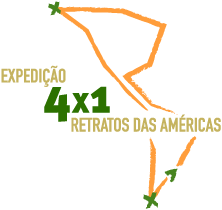
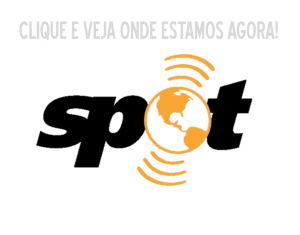


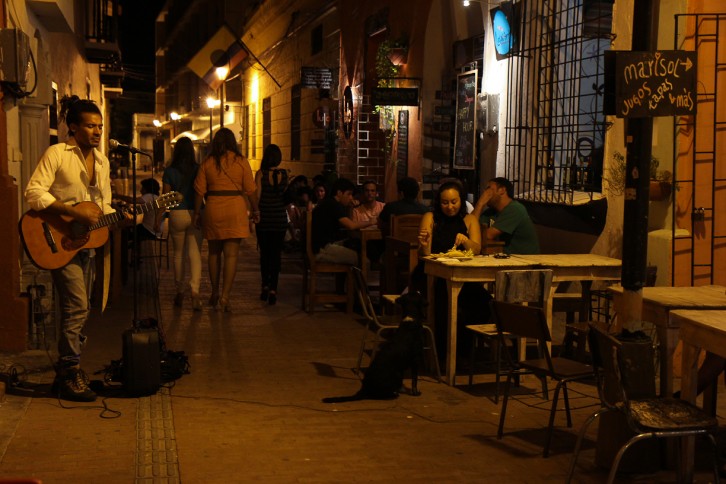
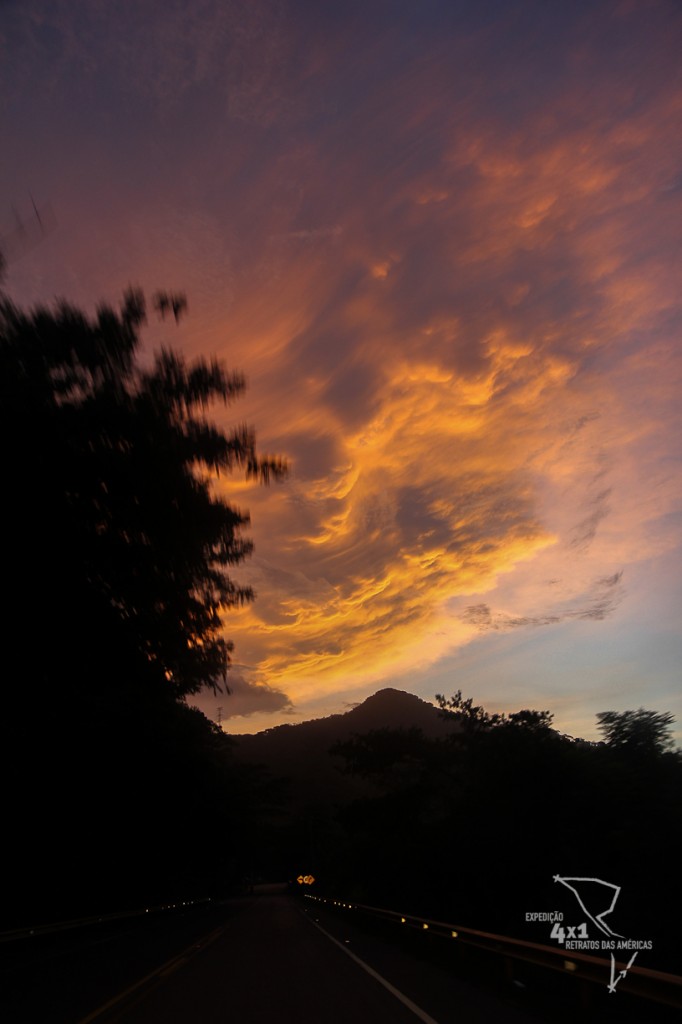

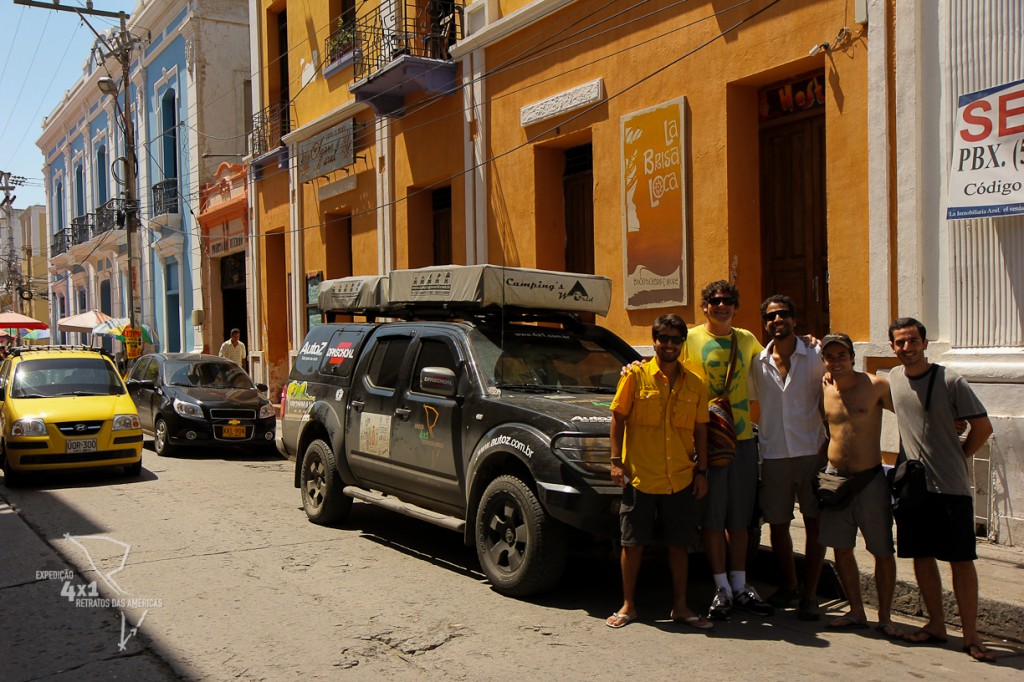
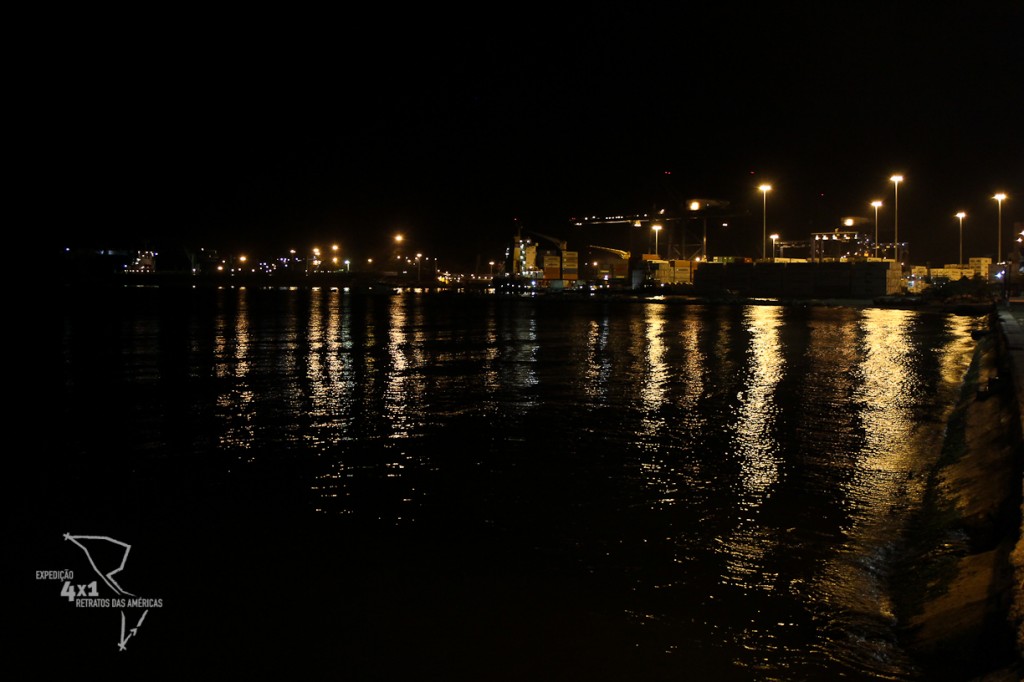
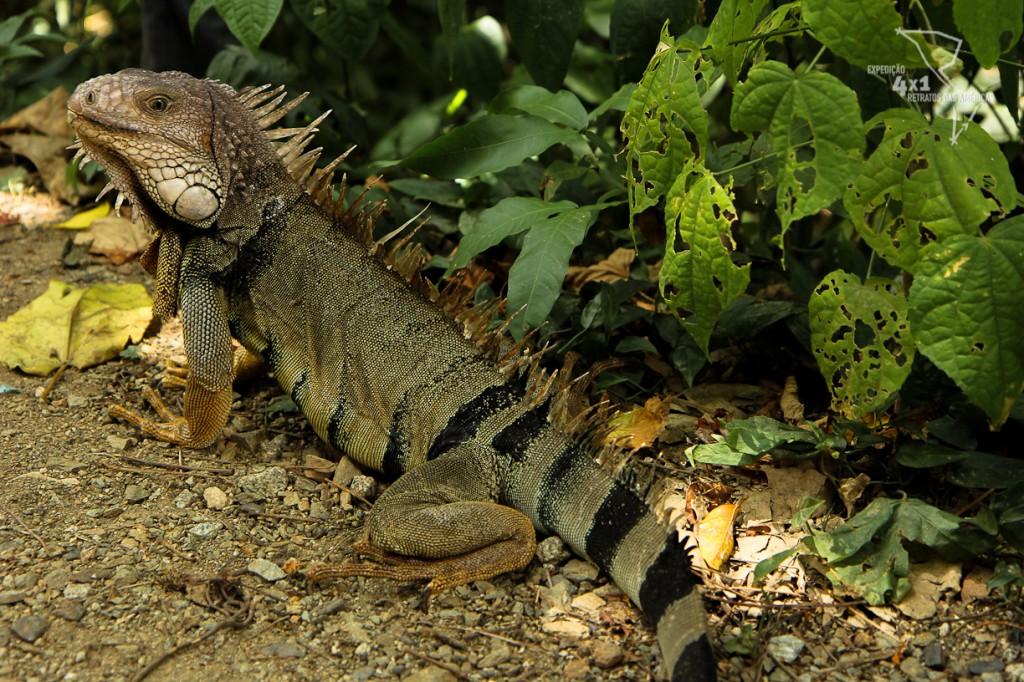
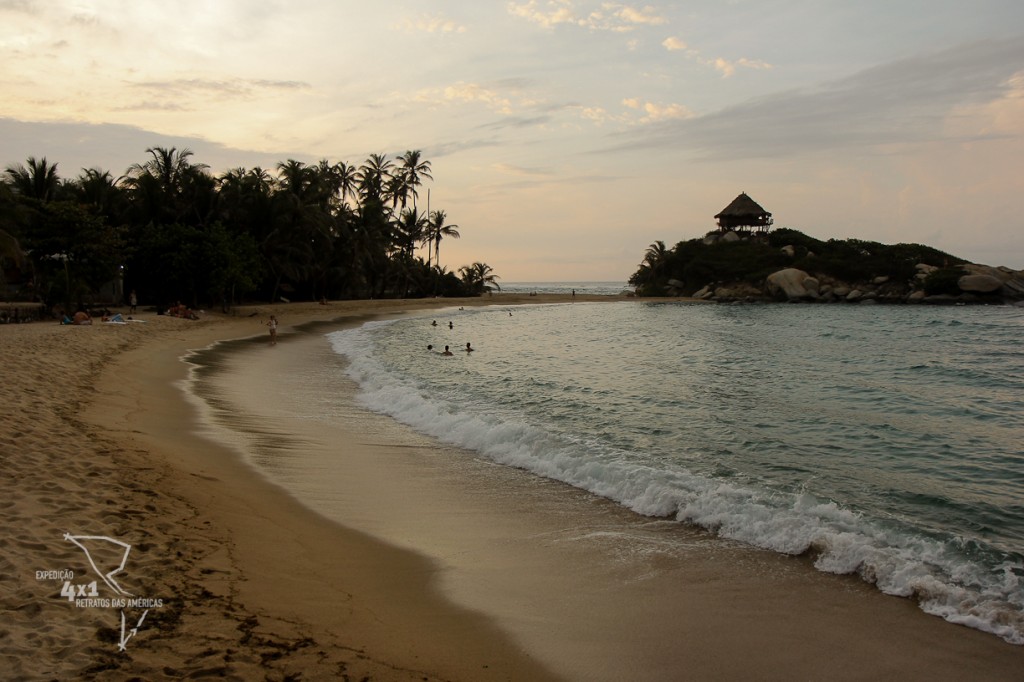
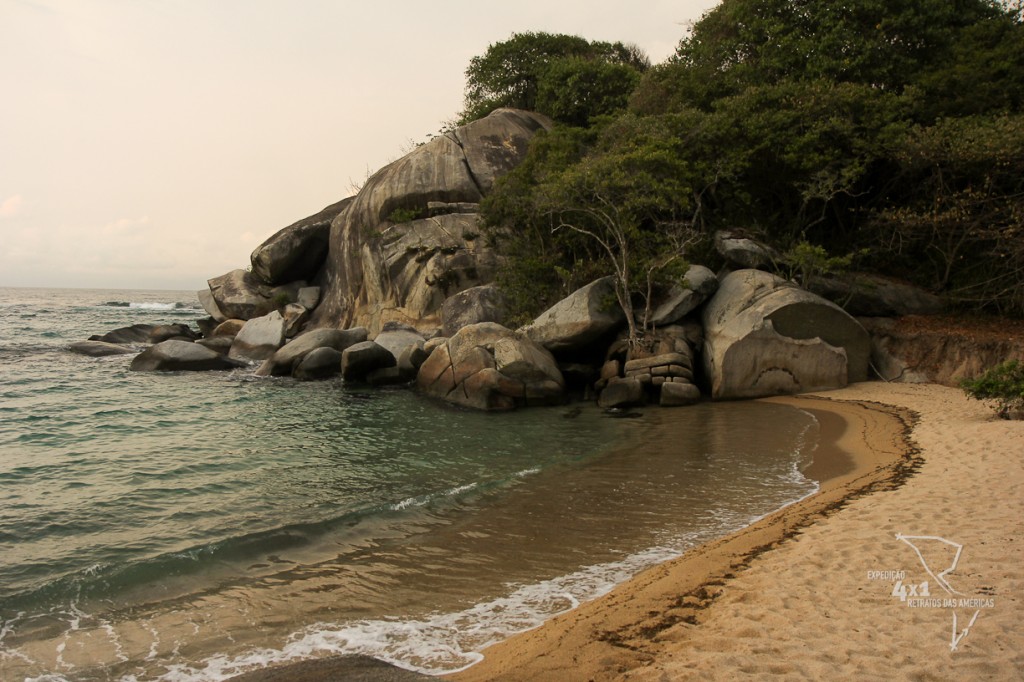
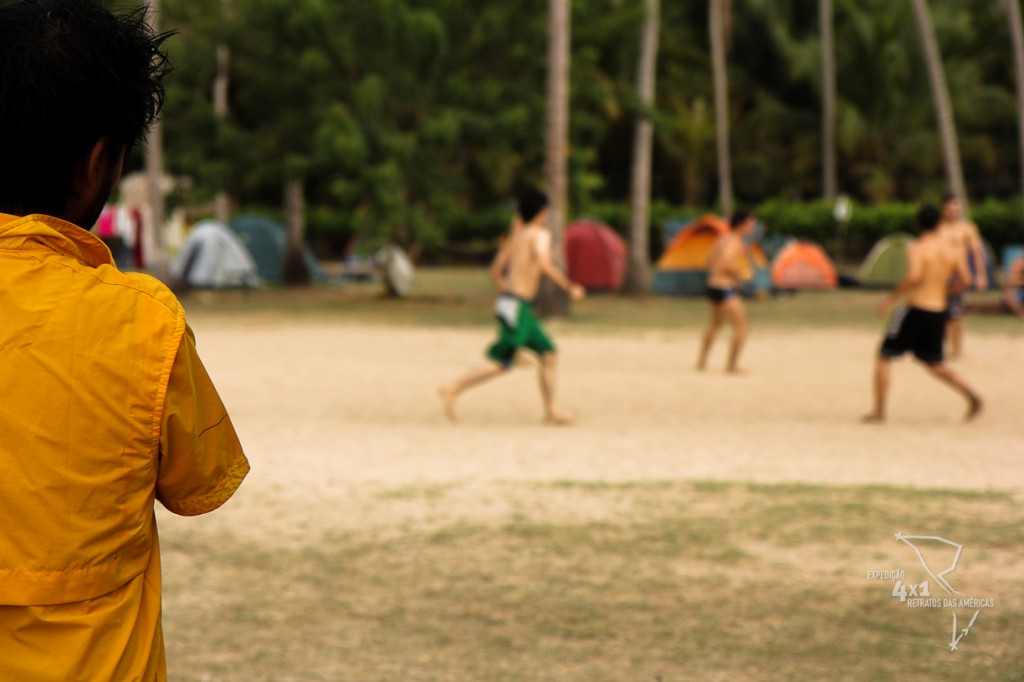
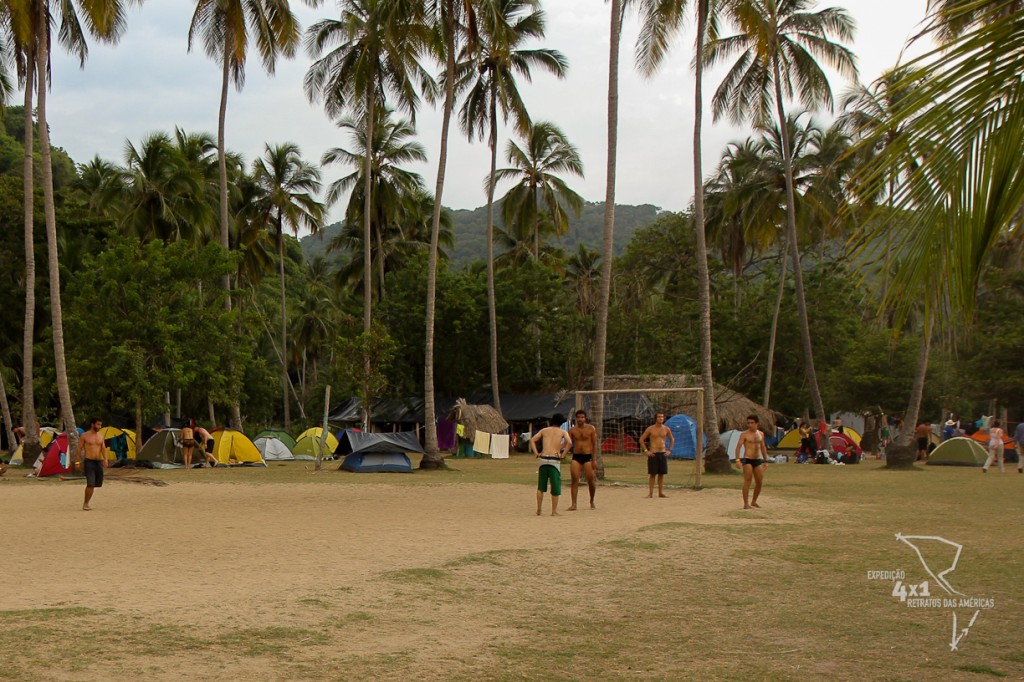
18 Comments
Ola !
Estou querendo fazer essa viagem totalmente de ônibus….alguma dica?
Luiz
Oi Luiz,
Você está pensando em fazer a viagem por toda a América de carro? Do Brasil ao Alasca e do Alasca ao Ushuaia?
Infelizmente nós não conhecemos ninguém que já fez tudo isso só de ônibus, mas acredito que deva dar certo sim. Claro que alguns trechos não seriam possíveis, dado que de carro o seu itinerário é muito mais flexível, mas por todos os lugares por onde passamos vimos ônibus ou trens ou vans de transporte público. Talvez o único país um pouco mais restrito seja os EUA, onde não existem muitas opções de ônibus não.
Ultimately, acho que vale a pena dar uma pesquisada, mas eu diria que é possível sim.
Qualquer dúvida entre contato conosco! Abração e boas viagens!
Boa tarde! Estou planejando fazer essa viagem de vcs de ônibus…total…alguma dica?
Obbrigado
Pessoal pelas fotos e relatos de vocês a visita ao parque Tayrona valeu o preço pago. After all, como aqui e em outros países, em alguns lugares também é feita cobrança diferenciada, e pior, nos Estados Unidos, for example, o acesso a certas salas do Congresso somente é permitido a cidadãos americanos. Continuem curtido a aventura.
Valeu Dirceu! It is true, essa diferenciação de preços é bastante comum e incentiva o turismo local, não podemos negar! Apesar do preço um pouco salgado o Parque Nacional de Tayrona valeu muito a pena, foi uma experiência bem interessante!! Grande abraço e obrigado!!
Que Deus os acompanhe e os proteja.
Amen! Obrigado Ne, fique com Deus também!
Apesar das intempéries, nada que as belezas mostradas não comutem.
Dificuldades a parte podem ter certeza que na firmeza de seu andejo estarão nossas orações.
“Hai que enducerse pero sin perder la ternura jamas!’ Che Guevara.
Oi Luiz, muito obrigado pelos incentivos!! No doubt, as belezas vistas nos motivam muito e nos ajudam a superar os eventuais obstáculos que encontramos no caminho!! Grande abraço y hasta luego!
Não sei se concordo com o ponto de vista de vocês em relação à cobrança diferenciada de entradas local vs. turista. Em Machu Pichu, a entrada para peruanos também é assustadoramente mais barata que para turistas de outras nacionalidades, mas achei ótimo e justo – é uma forma de incentivar o turismo local.
E vamos combinar, nor… R$ 40 pode não ser “de graça” mas não chega a ser um abuso – o Cristo Redentor custa R$ 44! E duvido que o serviço carioca seja pior do que o colombiano!! Hahahaha!
Oi Fernanda,
Concordamos com o conceito de diferenciação de preços para locais e estrangeiros, apenas achamos que aquela situação específica no Parque Nacional de Tayrona era um pouco exagerada….. Lá havia uma fila enorme para entrar no parque, apenas um funcionário fazendo o controle do acesso, o serviço era bastante ruim…ultimately, foi frustrante. Fora que o valor cobrado (40 real), na Colômbia, é bastante dinheiro….mesmo os colombianos com quem conversamos acharam o valor alto de mais pelo que o parque entrega. Big hug!
Hello, personal. Realmente um absurdo essas cobranças de pedágio que vcs sofreram. Na verdade tratou-se de extorsão. Creio que em nosso país os turistas não passam esse constrangimento. Boa viagem e estamos acompanhando. Abraços a todos
Pois eu tendo a discordar, Neide… Não no meio da cidade e de forma um tanto quanto intimidadora, mas já fui “vítima” de uma cobrança indevida, yes: Quando fui de Porto Seguro a Caraíva (a estradinha é pra-lá-de-arretada), 2 molequinhos nos cobraram uma tarifa para pôr de volta uma tábua de madeira (“ponte”) que cobria um BLASTER buraco/ riachinho, para que conseguíssemos seguir viagem! Hahahaha! Ninguém merece!
Our, Fernanda!!!!! então eu tenho tido “kind” RSRSRSRS. Acabei me lembrando dos “flanelinhas” ou pseudo guardadores de carros que vivem nos extorquindo. Não tem jeito mesmo. Hugs
Bem lembrado! Os flanelinhas são um absurdo mesmo… acaba sendo algo bem próximo! Pagamos para que eles não risquem nosso carro!
Oi Neide e Fernanda!! Muito válidos os pontos de vocês…todos estamos sujeitos a estas situações de cobranças indevidas! Infelizmente esse não é um problema isolado!
Esse é um dos grande problemas quando se está em terra de ninguém. Qualquer um sente-se no direito de cobrar pedágios e explorar com parcialidade os estrangerios. É sempre aconselhável pagar e ser sempre simpático mesmo se sentindo um idiota, para se evitar retalhações que possam por em risco o resto da viagem.
Oi Rogério! A experiência de passar por aquela situação foi bem ruim mesmo…e o pedágio não era cobrado só dos estrangeiros, qualquer um que quisesse passar por ali teria que pagar, um verdadeiro caos!